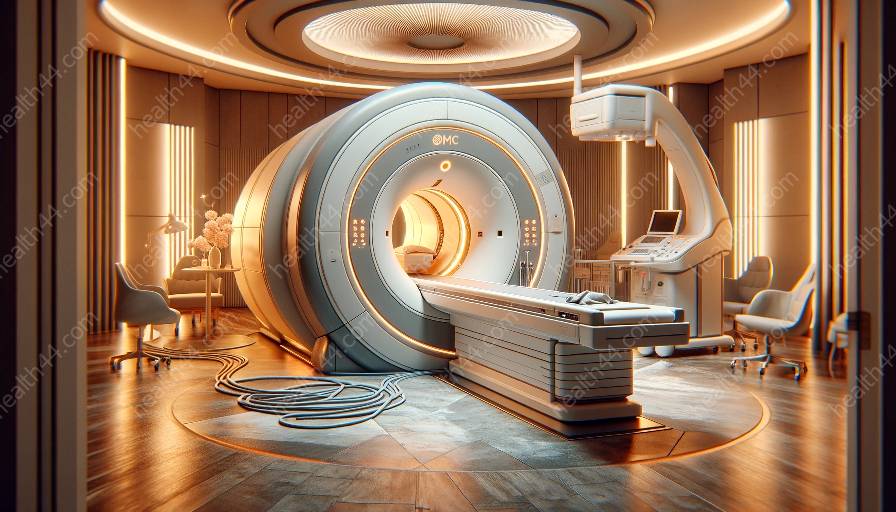Musculoskeletal imaging is a crucial aspect of modern medical diagnostics, enabling the visualization of complex structures such as bone, muscle, and ligaments. One of the most advanced and effective tools for musculoskeletal imaging is the Magnetic Resonance Imaging (MRI) machine. This topic cluster delves into the world of musculoskeletal imaging with MRI machines, highlighting their significance in the realm of medical devices and equipment.
Understanding Musculoskeletal Imaging
Musculoskeletal imaging involves the use of various imaging modalities to diagnose and monitor conditions affecting the musculoskeletal system. It plays a pivotal role in assessing injuries, tumors, infections, and degenerative disorders in the bones, joints, and soft tissues.
One of the most advanced and non-invasive techniques for musculoskeletal imaging is Magnetic Resonance Imaging (MRI). MRI machines utilize a powerful magnetic field and radio waves to generate detailed images of the musculoskeletal structures, providing valuable insights to healthcare professionals.
The Role of MRI Machines in Musculoskeletal Imaging
MRI machines have revolutionized the field of musculoskeletal imaging, offering unparalleled clarity and precision in capturing detailed images of anatomical structures. Unlike X-rays or computed tomography (CT) scans, MRI machines do not use ionizing radiation, making them a safer and preferred choice for imaging musculoskeletal conditions, especially in sensitive areas.
By leveraging the principles of magnetic resonance, MRI machines create high-resolution images of bones, joints, ligaments, and surrounding soft tissues, allowing healthcare providers to visualize and interpret the intricate details of musculoskeletal pathologies. The multiplanar capabilities of MRI facilitate comprehensive assessment of complex anatomical structures, aiding in accurate diagnosis and treatment planning.
Advancements in MRI Technology for Musculoskeletal Imaging
Continuous advancements in MRI technology have further enhanced its capabilities for musculoskeletal imaging. Innovations such as high-field MRI machines, dedicated musculoskeletal coils, and advanced imaging sequences have significantly improved the quality and diagnostic value of musculoskeletal MRI.
High-field MRI machines, operating at higher magnetic field strengths, offer superior image resolution and signal-to-noise ratio, enabling enhanced visualization of subtle musculoskeletal abnormalities. Dedicated musculoskeletal coils, designed to optimize image acquisition from specific body regions, further improve the spatial and contrast resolution of musculoskeletal MRI.
Advanced imaging sequences, including T1-weighted, T2-weighted, and fat-suppressed sequences, provide comprehensive characterization of musculoskeletal tissues, aiding in the differentiation of various pathologies such as bone fractures, ligament tears, and soft tissue tumors.
Impact on Diagnosis and Treatment
The use of MRI machines for musculoskeletal imaging has significantly impacted the diagnosis and treatment of a wide range of musculoskeletal conditions. The detailed anatomical information obtained through MRI imaging plays a crucial role in differentiating between benign and malignant musculoskeletal lesions, guiding appropriate treatment strategies.
Furthermore, musculoskeletal MRI serves as a valuable tool for preoperative planning, enabling surgeons to visualize the extent of musculoskeletal injuries or pathologies and formulate precise surgical approaches. The ability to accurately assess soft tissue structures and detect subtle abnormalities contributes to improved surgical outcomes and patient care.
In the realm of sports medicine, musculoskeletal MRI is instrumental in evaluating sports-related injuries, such as ligamentous tears, tendon disorders, and stress fractures. Timely and accurate diagnosis through MRI imaging enables prompt initiation of targeted rehabilitation programs, facilitating the recovery of athletes and active individuals.
The Future of Musculoskeletal Imaging with MRI Machines
As technology continues to advance, the future of musculoskeletal imaging with MRI machines holds the promise of further improvements in image quality, workflow efficiency, and diagnostic accuracy. Emerging developments such as artificial intelligence (AI)-based image reconstruction, functional MRI (fMRI) for evaluating musculoskeletal dynamics, and quantitative MRI techniques are poised to revolutionize the field of musculoskeletal imaging.
Additionally, the integration of MRI with other imaging modalities, such as positron emission tomography (PET) and single-photon emission computed tomography (SPECT), is anticipated to provide comprehensive multimodal assessments of musculoskeletal pathologies, offering valuable insights into disease processes and treatment response.
Conclusion
Musculoskeletal imaging with MRI machines represents a cornerstone of modern medical diagnostics, playing an indispensable role in the evaluation and management of musculoskeletal disorders and injuries. The advanced capabilities of MRI machines, coupled with ongoing technological advancements, continue to elevate the standard of care in musculoskeletal imaging, leading to improved patient outcomes and enhanced clinical decision-making.


